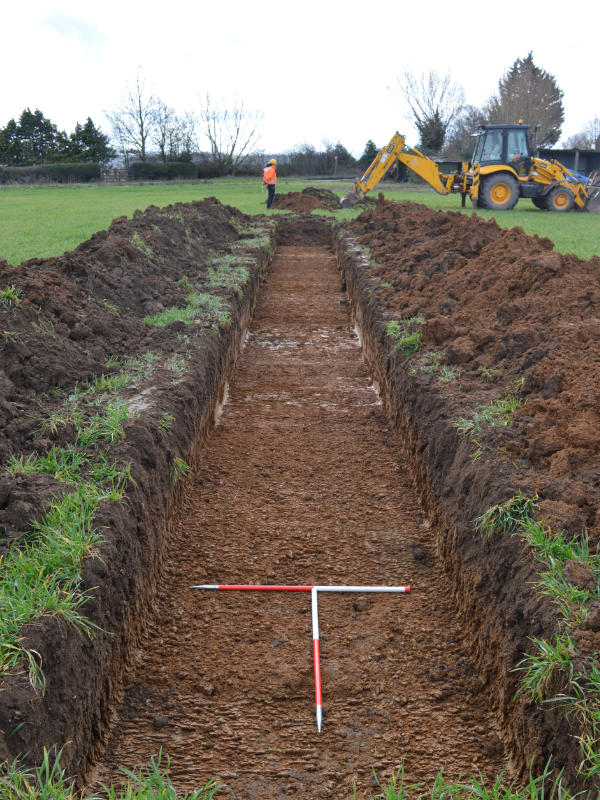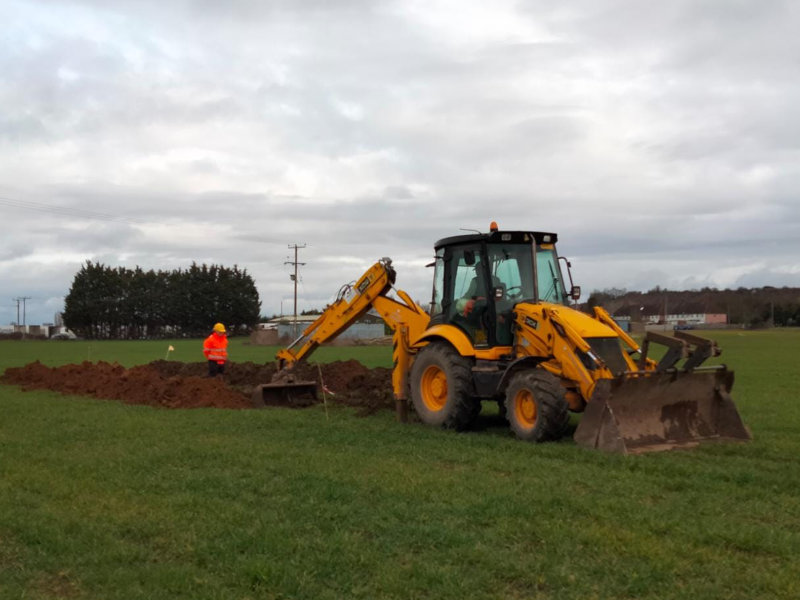Archaeological Evaluation
What is an archaeological evaluation?
An archaeological evaluation is a fieldwork exercise to assess the archaeological potential of a proposed development site. It generally involves opening trenches to see if buried remains survive below the ground. This can be requested either to support an application or be required as a condition of approval.

What is required to set up an archaeological evaluation?
The first stage is to produce a Written Scheme of Investigation and submit it to the LPA for approval. Once approval is given, mobilisation includes production of a Risk Assessment Method Statement, ordering plant, fencing if required, and (depending on the duration of the evaluation) welfare facilities. The client will be asked to provide details of access to the site and any known hazards.
How does an archaeological evaluation work?
In general, most archaeological remains survive at the level of the ‘natural’ undisturbed substrate beneath topsoil and subsoil. Evaluation trenches are opened to this level across a sample of the site to see if archaeology survives at this level.
In most cases mechanical excavators are employed to remove the upper layers (topsoil and subsoil) to reveal the substrate. Some clients prefer to arrange their own excavator but we can also hire one in.
If there are archaeological features present, these will be excavated by hand and recorded with photographs, plans and GPS survey.
Often for a small development such as a single house, barn or extension, one or two trenches will be required. For larger developments, a 4% sample of the site is usual, which might require multiple trenches 30m or 50m long. Once the evaluation is complete, the trenches will be backfilled.
Ambrey Archaeology can undertake small to medium sized evaluations.
What happens after fieldwork?
After the evaluation, a report, including specialist analysis of pottery, bones and environmental samples, will be prepared for submission to the LPA who will use it to decide whether further works are required.
If archaeological features are present, this will normally comprise an excavation but if nothing significant has turned up, the development can generally continue.
After submission of the report provision also has to be made for any artefacts and records to be deposited at a museum.



Talk to us about your project
Call Elizabeth or Tom on 01568 780 918 or send us a message via our contact form below. We look forward to talking with you.
Frequently Asked Questions
Why do I have to pay for archaeology and how much does it cost?
Archaeological works have been a part of planning law since 1990. The purpose of archaeological works is to ensure that these irreplaceable remains are not lost to development. Over the last 33 years, thousands of archaeological sites have been recorded ahead of...
What happens if you find human remains?
It is unusual to encounter unexpected human remains in the course of archaeological work, but if this happened best practice guidance would be followed. The remains would initially be left in situ, covered and protected and the local Coroner would have to be informed....
What happens if you find treasure?
It’s very rare to find artefacts of any monetary value on archaeological sites but in the event that any artefacts are encountered that would constitute ‘treasure’ (as defined by The Treasure Act, 1996) Ambrey Archaeology would be obliged to report the find to the...
What happens if you find a Roman villa?
Prior to carrying out archaeological evaluations and watching briefs, the likelihood of encountering a villa or something equivalent is considered, sometimes with the use of a desk based assessment or geophysical survey, with the purpose of avoiding this outcome....
